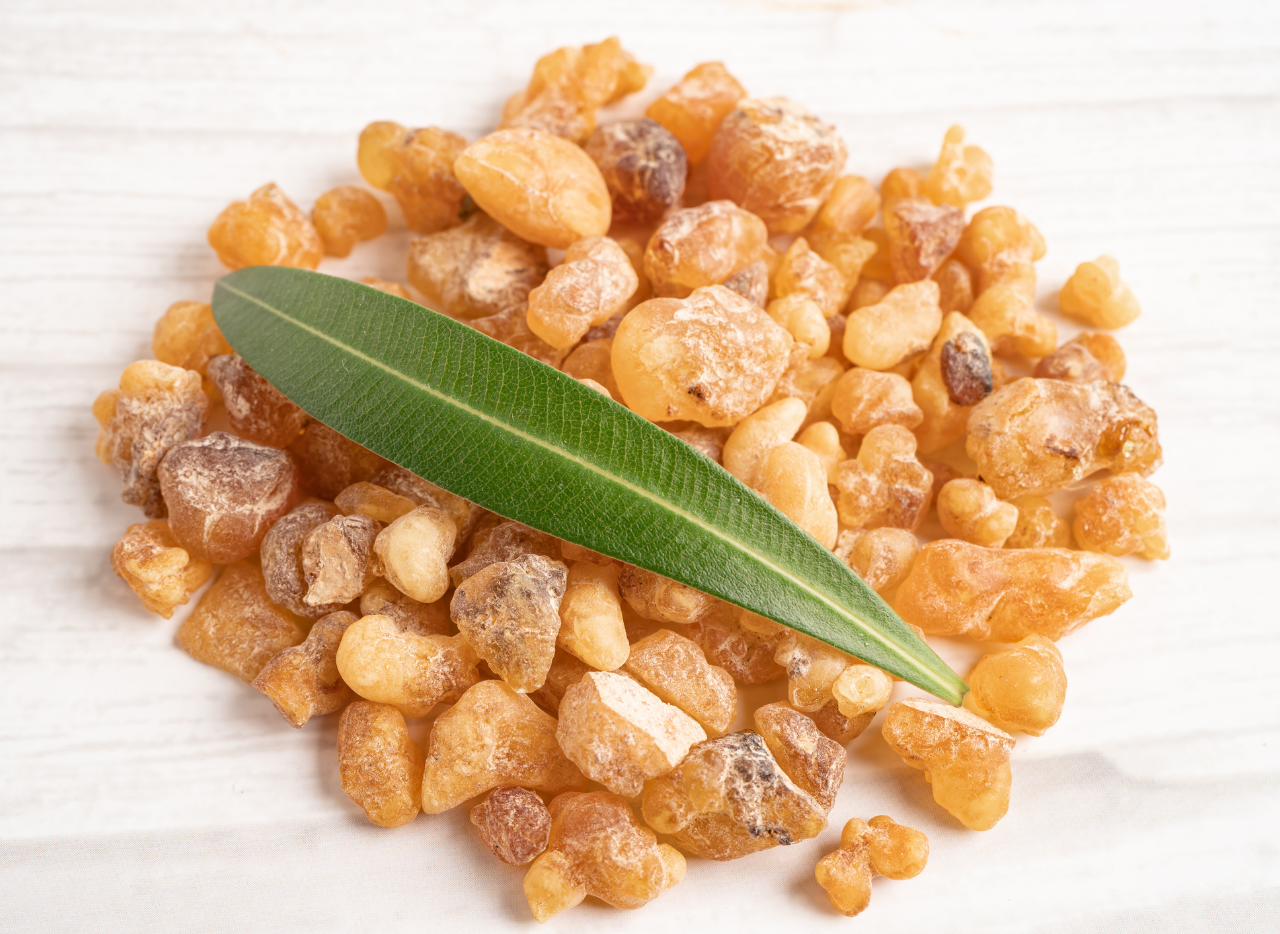
Resinoid Olibanum, commonly known as frankincense, is a resin with an aroma so rich and spiritual, it's been burned in temples, churches and homes for over many years. But unlike popular belief, its primary role today isn’t in perfumery or luxury fragrance bottles. The real magic of this resin lies in its burning properties, especially when it comes to crafting incense sticks or agarbattis.
Extracted from the Boswellia serrata tree, also known as Indian olibanum, this resin is treasured across cultures not just for its soothing fragrance but also for its ceremonial, medicinal and emotional healing powers. Used predominantly in spiritual practices, it has become a staple in both religious and wellness settings, not because of its role in perfumes, but due to its exceptional qualities when burned.
In this comprehensive guide, we will explore how this ancient resin is still making waves in modern incense-making, what makes Indian Resinoid Olibanum stand out and why its use has shifted focus from fragrance in burning.
Resinoid Olibanum: Origins and Botanical Background
Among these, Boswellia serrata, found mainly in India, holds a distinct place for its functional and spiritual value. Over time, this resin hardens into translucent amber-colored tears. These are then either used as or further processed into resinoid through solvent extraction, which is ideal for incense and burning applications.
What makes Resinoid Olibanum unique is its combustion properties? Unlike its used in high-end essential oils and perfumes - Boswellia serrata is preferred for its stable burn rate, deep scent diffusion and compatibility in incense production. It burns slowly and steadily, allowing other fragrant materials in agarbatti blends to release their aromas over a longer period. This dual benefit of fragrance and healing makes Resinoid Olibanum a favorite for incense artisans and spiritual practitioners alike.

Historical and Cultural Significance in Spiritual Practices
The cultural story of Resinoid Olibanum is as ancient as civilization itself. For thousands of years, burning this resin has been an act of worship, purification and divine communication. The smoke is not just aromatic - it’s symbolic, often seen as a link for prayers and intentions.
Resinoid Olibanum was worth its weight in gold. Pharaohs demanded it for temple rituals and burial rites. The smoky trails that rose from altars carried sacred messages to their gods. It wasn’t just a scent - it was a bridge between the human and the divine.
In Hindu ceremonies, agarbattis made with this resin are burned during daily worship, at temples, during weddings, funerals and festivals. The belief is strong: this resin clears the mind, purifies the air and creates a sacred space.
Unlike its use in luxury fragrance circles, where it might be distilled for essential oils, Resinoid Olibanum’s real legacy lies in its role in rituals - as incense, not as perfume.
Medicinal Uses in Ayurveda and Traditional Medicine
Boswellia serrata isn’t just spiritually powerful - it’s medically potent too. Traditional systems like Ayurveda and Chinese Medicine have used it for centuries to treat inflammation, respiratory issues and joint problems.
Interestingly, the burning of this resin - as is done in incense - also supports respiratory wellness. The smoke itself has been used in traditional homes to clear nasal passages, relieve anxiety and balance emotional health. Again, it's through burning that its full spectrum of benefits becomes accessible.
Incense Over Perfume: The Real Use in Fragrance Crafting
There’s a major misconception in how Resinoid Olibanum is used commercially. While high-end perfume houses may dabble in rare frankincense oils, the truth is: the primary application of Resinoid Olibanum is not in perfumes - but in products like incense sticks and burning cones. It’s heavier, smokier and more stable - making it perfect for burning. This makes it an ideal base ingredient in agarbattis, dhoop sticks and other ritualistic incense forms.
When burned, the resin emits a warm, grounding aroma that blends effortlessly with sandalwood, patchouli or rose. It also acts as a fixative, holding other scents in the mix and ensuring they don’t evaporate too quickly. This ensures a long-lasting, layered burn that’s essential in incense products used during prayer or meditation. In contrast, perfumes demand volatility - quick release of aroma, light top notes and rapid evaporation.
Conclusion
Resinoid Olibanum, especially from the Boswellia serrata tree, is far more than an aromatic novelty. It's a historical powerhouse, a medicinal ally and a spiritual staple that has survived millennia of cultural evolution. While some may associate frankincense with perfume counters and high-end oils, its true strength lies in its burning properties - particularly in the incense sticks and spiritual tools that form the backbone of ritual life in many parts of the world.
As incense, Resinoid Olibanum creates a sacred atmosphere, heals the mind and body and preserves a tradition that connects us to something greater than ourselves. Whether in a temple, home or healing space, when you light a stick of agarbatti and inhale that grounding aroma.
Recent Posts
- Amyris Oil Applications: Versatile Uses Across Various Industries
- The Role of Amyris Oil in the Fast-Growing Wellness Sector: Top 10 Countries Leading the Demand
- Geranium Egyptian Oil Biofunctional Properties: A Valuable Ingredient in Cosmetics, Fragrances, and Wellness
- Vetiver Oil: From Chemical Composition to Global Market Influence
- Agarwood (Oudh) : The Global Market for 'Liquid Gold' - An Industry Worth Billions
- The History and Origins of Balsam Peru
- Asia's Influence on the Global Sandalwood Oil Market
Copyright @ 2025 | BMV Fragrances Private Limited | All Rights Reserved
Website Design & Digital Marketing by webmasterindia.
Website Updated On:




